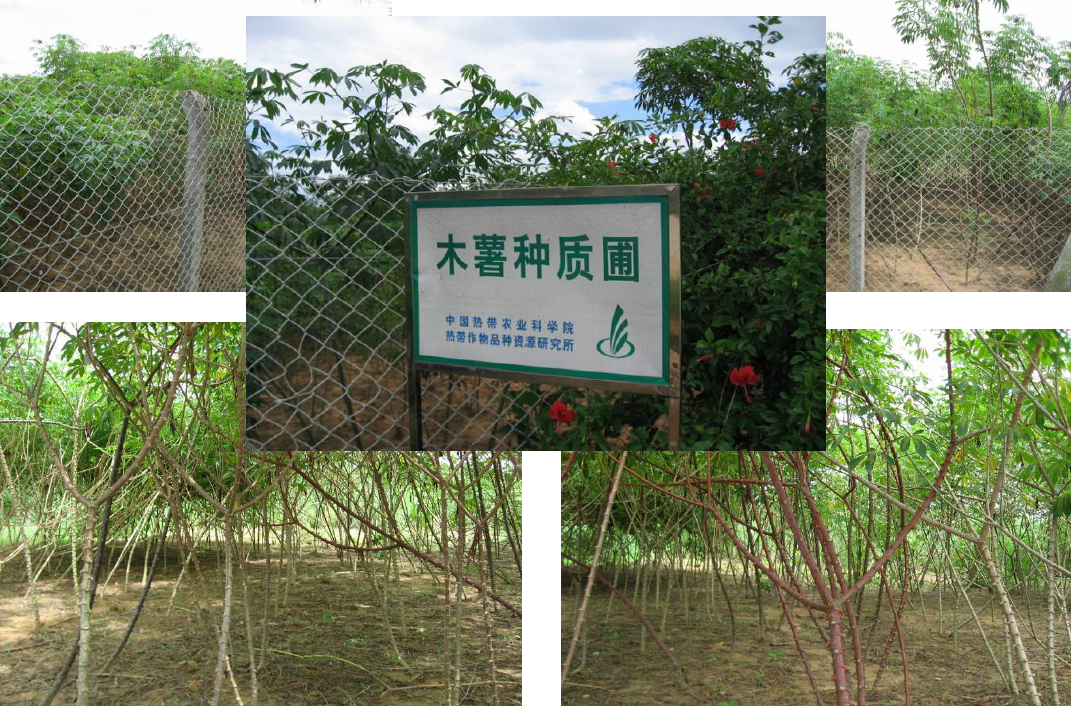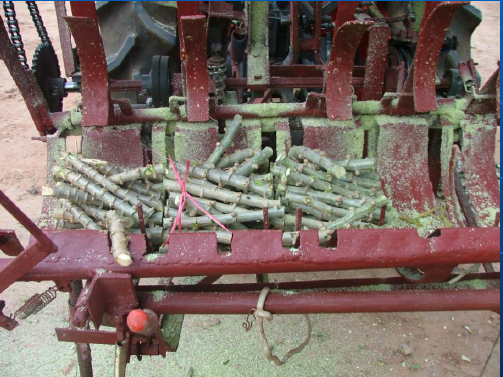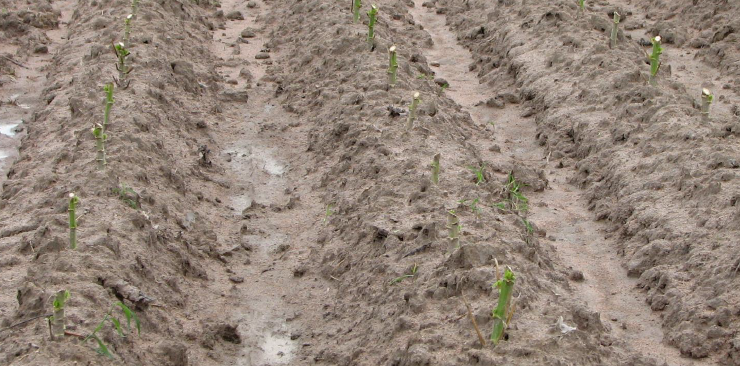I. Site Choice and Land Preparation
Cassava has a wide adaptation and can grow in various types of soil, and any land can be selected only if the land is not too poor with too many gravels or stones and is not water logged as well.
Generally the land should be plowed 30 cm or so deep prior to planting, and the soil is loosened with the rakes mounted on the tractor.
Loose soil is conducive to cassava growth. The land is cultivated in various ways.
In the gentle sloping hill with sloping of 15° or lower the land can be mechanically plowed to set up ridges for planting for convenience of mechanical operation.
In the land with sloping of 15° or high, attention should be paid to water and soil conservation, and it is better to build contoured terraces before planting. In hilly undulated land with complicated land relief, non-tillage is recommended for planting. In the land with the sloping of above 25° the cassava is not recommended to be planted since planting in such a steep land will result in severe soil wash.

Chinese Cassava Genetic Resource Garden
II. Planting Materials
Stems for planting should be fresh, distinct in color, and produce latex when cut. These stems contain high nutrients, have high viability and high sprouting rate, and are good for raising strong seedlings which yield high. Therefore, the primary stems used as planting material should be fully mature and strong, have close nodes, full pith with abundant moisture, intact eyes or buds and no injury to bark and buds, and are free of diseases and pests.

Seeds Cutting
III. Planting
• Horizontal
Pits/holes or furrows about 5-8 cm are dug and the stem cuttings or stakes are placed horizontally and buried shallowly. Stakes planted horizontally can set tuberous roots/tubers around the stakes, and the tubers grow shallowly and can be harvested easily. This planting orientation is commonly practised in production. However,the stakes are buried in the soil, poorly aerated and are hence hard to sprout from the soil, which might result in absence of seedlings in the pits. The plants also have poor tolerance to wind.
• Inclined
The stakes are planted inclined with the buds facing up and 1/3 of the stake or the whole stake is buried in the soil at an angle of 15°-45°.
The stakes planted inclined produce seedlings fast and in a large number, and the stakes inclined on the ridge produce tubers in the same direction, which are harvested easily by machines. The plants are however not tolerant to wind.

One week after planting
• Vertical
The stakes are planted vertically on the ridge with the buds facing up, and some of the stake or the whole stake is buried in the soil. The stakes planted vertically produce seedlings earlier and uniformly, and the tubers grow deep into the soil. This gives more stability to the plant against wind and drought, but makes harvesting more difficult. This variety is not uniform in tuber size, and requires more labor at planting and harvest.It is seldom practiced commercially.
At planting the stems are cut 15-20 cm long with, sharp cutlass into stakes, and the stakes are planted horizontally, inclined or vertically and buried shallowly with soil. The planting density relies on the soil fertility and variety.The stakes are planted at a low density when the soil is fertile, or vice versa, and generally at 2000-15000 stakes/ha but not higher than 24000 stakes/ha. They are most commonly planted at a spacing of 1.0m×0.8m or 0.8m×0.8m.
Ⅳ. Field Care
• Replanting
The seedlings are generally absent due to that fact that the stakes are stored too long and lose too much moisture, are too young
and small or too short, or are planted at a low temperature, under drought or excessive rainfall, or too humid. New stakes or seedlings must be replanted in place of the dead. Replanting is usually done 20 days after the planting, and the earlier the better. The dead can be replanted directly with stakes or young seedlings raised before hand. Replanting is done in rainy or cloudy days, or the stakes or seedlings are watered after replanting.
• Thinning
The stakes usually produce 2-4 or more stems each pit from the soil after planting. When allowed to grow naturally, these stems will shade each other and consume more nutrients in each pit.
Generally the seedlings are thinned at a rate of 1-2 seedlings/pit when all the stakes produce seedlings which are15-20cm tall.
• Weeding
The cassava tubers require loose well-aerated soil for better growth. Pre-emergence weeding is necessary 1 week after planting. The land has no weeds after plowed and is sprayed with acetochlor to kill the seeds of weeds. Glyphosate or roundup is added to kill weeds if the weeds are numerous. The first intertillage is done to kill weeds and encourage the growth of seedlings 30-40 days after planting when the seedlings are 15-20cm high, followed by the second intertillage in 60-70days after planting, or the third intertillage in 90-100 days after planting whenever necessary.
• Fertilizer dressing
Cassava can be side dressed with fertilizer earlier to improve the rapid growth of the seedlings, which allows early forming of strong stems and branches for the good of high yielding. It is generally recommended to dig a pit 5-8 cm deep 20cm away from the stem, into which all fertilizers are placed once in combination with weeding, when the seedlings grow about 20 cm high about 1 month after planting. In newly reclaimed land with fertile soil cassava requires no fertilizer when planted for the first 2
continuous rounds of cropping. Fertilizers are dressed at the ratio of N∶P2O5 ∶K2O=2∶1∶2 in poor land or in the land where 2 continuous crops of cassava have been harvested, and at the ratio of N∶P2O5∶K2O=3-4∶1∶3-4 after the fifth crop.
The cassava can generally yield high and stable at 40-45 ton/hm² when it is dressed with organic manure at the rate of 15 ton/hm² , urine at 100-225 kg/hm² , super phosphate at 100-300 kg/hm² and muriate of potash at100-250 kg/hm² , or with compound fertilizer (15∶15∶15) at 150-300 kg/hm², urine at100-180 kg/hm² and muriate of potash at 100-200 kg/hm².
Excerpted from:
the Collection of Pamphlets for Practical Farming Techniques for Tropical Agriculture: Cassava Cultivation Compiled by Chinese Academy of Tropical Agricultural Sciences (CATAS)
Category
Cassava Cultural Practices
Contributor
Cassava Cultural Practices
Country
Technical Solution

